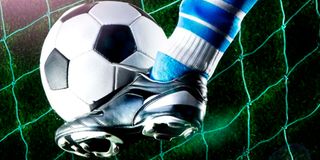Top five most gruesome football injuries

Warm-up before playing football to minimise risk of injury.
What you need to know:
- Football players are prone to injuries but can minimise risk by taking the necessary precautions.
- It is important to take care of any injury as soon as possible to prevent further damage.
- In addition to following the proper treatment methods, there are general safety tips that all footballers should follow to avoid injuries.
Football is a fun sport with many super fans. Whether it is international football clubs or high school teams, many people love to watch football. However, like any other sport, there are always injuries.
Every year, players are injured in gruesome ways. Some of these injuries are so bad they end up on the news.
Players get injured in the following scenarios
- Tackled the wrong way
- Hit their head on the ground
- Fall awkwardly
- Twist and turn
- Get fatigued therefore overusing the muscles
- Run into another player
- Improper training
Injuries sustained by football players
Hamstring Tear
This is a common football injury that happens when the muscle tissue in the back of the leg is overstretched or torn. This can occur when a player suddenly sprints or changes direction. Symptoms of a hamstring tear include pain, swelling, and bruising.
How to deal with hamstring tear:
- Rest
- Ice the area
- Apply compression
- Keep the leg elevated
- Take painkillers
- Seek medical assistance
Knee ligament injuries
The four main knee ligaments can be sprained or torn in a football injury. The most common knee injury is an anterior cruciate ligament (ACL) tear. This happens when the knee is bent backward, twisted, or hit. Symptoms of an ACL tear include pain, swelling, and instability of the knee.
How to deal with knee ligament injuries:
- The RICE method (rest, ice, compress and elevate)
- Surgery (for ACL tear)
- Physical therapy
Achilles tendon rupture
The Achilles tendon is the large tendon in the back of the leg that connects the calf muscle to the heel. A rupture is a complete or partial tear of this tendon. It can happen when the tendon is overstretched or torn. An Achilles tendon rupture symptoms include pain, swelling, and difficulty walking.
How to deal with Achilles tendon rupture:
- Surgery
- Casting
- Physical therapy
Fractured collarbone
The collarbone is a bone in the shoulder that connects the breastbone to the shoulder blade. A fractured collarbone is a break in this bone. It can happen from a fall, direct hit, or other impacts to the shoulder. Symptoms of a broken collarbone include pain, swelling, and bruising.
How to deal with a fractured collarbone:
- Surgery
- Casting
- Physical therapy
Concussion
A concussion is a brain injury that happens when the head is hit or shaken. Symptoms of a concussion include headache, dizziness, short memory, and confusion. Concussions can also cause problems with memory, sleep, and mood.
It can be hard to diagnose a concussion because the symptoms can be subtle. However, if you think you or someone else has a concussion, it is important to see a doctor.
How to deal with a concussion:
- Rest
- Take painkillers
- See a doctor
Jumper's knee
Jumper's knee is a type of injury that happens when the tendon that connects the kneecap to the shinbone is overstretched or torn. This can occur from jumping, running, or sudden changes in direction. Symptoms of the jumper's knee include pain, swelling, and stiffness.
Jumper's knee is also called patellar tendonitis or patellar tendinopathy.
How to deal with jumper's knee:
- RICE method
- Stretching and strengthening exercises
- Surgery (for severe cases)
- Anti-inflammatory medication
Ankle sprain
An ankle sprain is a type of injury that happens when ligaments in the ankle are overstretched or torn. This can occur from a fall, direct hit, or other impacts to the ankle. Symptoms of an ankle sprain include pain, swelling, and bruising.
How to deal with an ankle sprain:
- RICE method
- Wearing a splint or brace
- Physical therapy
General safety tips for footballers
- Warm-up before playing
- Stretch before playing
- Cool down after playing
- Wear the right shoes
- Exercise to strengthen the body




